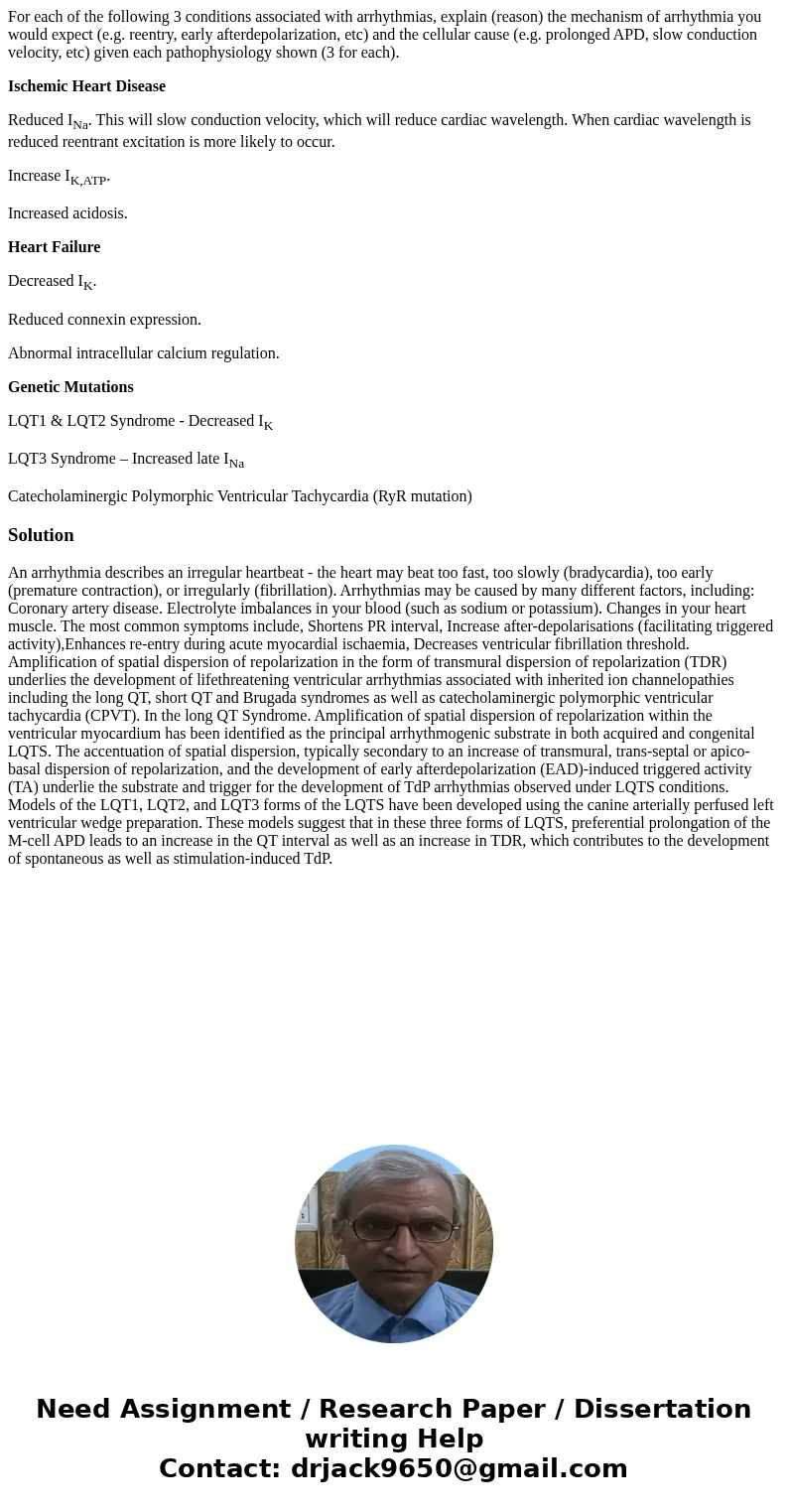For each of the following 3 conditions associated with arrhy
For each of the following 3 conditions associated with arrhythmias, explain (reason) the mechanism of arrhythmia you would expect (e.g. reentry, early afterdepolarization, etc) and the cellular cause (e.g. prolonged APD, slow conduction velocity, etc) given each pathophysiology shown (3 for each).
Ischemic Heart Disease
Reduced INa. This will slow conduction velocity, which will reduce cardiac wavelength. When cardiac wavelength is reduced reentrant excitation is more likely to occur.
Increase IK,ATP.
Increased acidosis.
Heart Failure
Decreased IK.
Reduced connexin expression.
Abnormal intracellular calcium regulation.
Genetic Mutations
LQT1 & LQT2 Syndrome - Decreased IK
LQT3 Syndrome – Increased late INa
Catecholaminergic Polymorphic Ventricular Tachycardia (RyR mutation)
Solution
An arrhythmia describes an irregular heartbeat - the heart may beat too fast, too slowly (bradycardia), too early (premature contraction), or irregularly (fibrillation). Arrhythmias may be caused by many different factors, including: Coronary artery disease. Electrolyte imbalances in your blood (such as sodium or potassium). Changes in your heart muscle. The most common symptoms include, Shortens PR interval, Increase after-depolarisations (facilitating triggered activity),Enhances re-entry during acute myocardial ischaemia, Decreases ventricular fibrillation threshold. Amplification of spatial dispersion of repolarization in the form of transmural dispersion of repolarization (TDR) underlies the development of lifethreatening ventricular arrhythmias associated with inherited ion channelopathies including the long QT, short QT and Brugada syndromes as well as catecholaminergic polymorphic ventricular tachycardia (CPVT). In the long QT Syndrome. Amplification of spatial dispersion of repolarization within the ventricular myocardium has been identified as the principal arrhythmogenic substrate in both acquired and congenital LQTS. The accentuation of spatial dispersion, typically secondary to an increase of transmural, trans-septal or apico-basal dispersion of repolarization, and the development of early afterdepolarization (EAD)-induced triggered activity (TA) underlie the substrate and trigger for the development of TdP arrhythmias observed under LQTS conditions. Models of the LQT1, LQT2, and LQT3 forms of the LQTS have been developed using the canine arterially perfused left ventricular wedge preparation. These models suggest that in these three forms of LQTS, preferential prolongation of the M-cell APD leads to an increase in the QT interval as well as an increase in TDR, which contributes to the development of spontaneous as well as stimulation-induced TdP.

 Homework Sourse
Homework Sourse